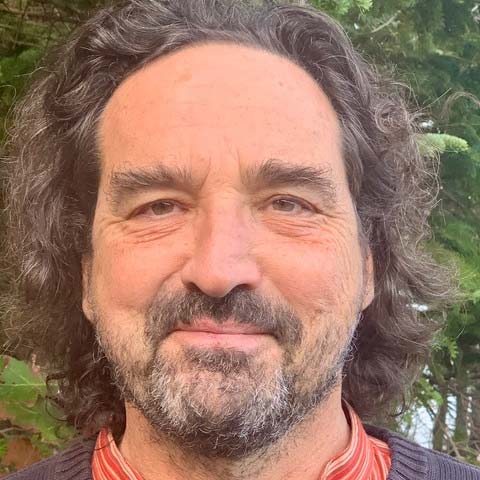Past, Present and Future: Redesigned Visual History Archive to Expand Global Access to Holocaust and Genocide Testimonies
USC President Carol L. Folt and scholars from USC and beyond gathered at the global headquarters of USC Shoah Foundation on November 11 for the public launch of the redesigned Visual History Archive, the world’s largest collection of primary source video testimonies from survivors of the Holocaust and other genocides.
The event marked the release of several updates that deepen the search capabilities of the Visual History Archive (VHA) and included a panel discussion with USC faculty, students and institutional researchers who discussed the many innovative ways that archive testimony features in their work.
President Folt said the archive’s 55,000 testimonies are “needed now more than ever” and that it is “an incredible privilege” for USC to host “this true gift to humanity.”
“The voices in the Visual History Archive are resonating so much today as we see this burst of hatred and anti-Semitism around the world. And I look to this and the work of all of you in the Shoah Foundation to really use this amazing resource to inspire…and bring our community together.”
The Visual History Archive redesign was a five-year process that brought a wide range of improvements: a modern interface; greater sharing capability with other researchers; integration into other USC Shoah Foundation resources; faster, broader and more seamless access to content; transcripts, cataloging and upgraded mobile capabilities. Together, these new features enable users to find, view, store, and engage with survivor and witness testimony with unprecedented ease.
USC Shoah Foundation’s Finci-Viterbi Executive Director Dr. Robert Williams said the revamped VHA furthers our obligation as a society “to learn the truth and spread it as far and as wide as circumstances allow.”
“Real sustainable change…requires an interrogation of the past and our present through research and the forming of emotional bonds with those who survived, witnessed and gained insights into the worst of our impulses,” Dr. Williams said.
“USC Shoah Foundation provides a mouthpiece for those voices to be heard. We exist to provide an opportunity for the voices of survivors and witnesses to contribute to our collective betterment.”
Following President Folt and Dr. Williams’ remarks, USC Shoah Foundation Deputy Executive Director Kori Street moderated a live demonstration of the new platform and a discussion with three scholars who spoke to the many ways the VHA updates will further their research.
Dr. Todd Presner, Michael and Irene Ross Professor and Chair, Department of European Languages and Transcultural Studies at UCLA, said new VHA functions—especially improved search functionality—provide “an opportunity to really deepen the ethical engagement with the archives.”
“[The VHA contains] narratives of human experience that are full of such detail and such granularity, such precision,” Dr. Presner said. “And how do we find the content, the subjects, the places, the people, but also the experiences, the emotions? All this is possible through the ways in which the indexing system has been created and now through the kind of filters that you have.”
Dr. Mary Helen Immordino-Yang—Fahmy and Donna Attallah Chair in Humanistic Psychology / Director, USC Center for Affective Neuroscience, Development, Learning and Education / Professor of Education, Psychology & Neuroscience, Brain & Creativity Institute, USC Rossier School of Education—spoke of the transformative power of survivor testimony.
“When young people engage with deeply powerful stories, it teaches them how to build that kind of inspired, hopeful experience. What you're really doing is teaching them about history, but you are enabling them to be able to imagine a future which has a different kind of humanity, which has a different kind of humanistic awareness of each other's experiences, of each other's possibilities, of each other's pain, of each other's reward and pleasure. And as we do that, we construct hope,” Dr. Immordino-Yang said.
For his part, Dr. Ishwar Puri, Vice President of Research, USC and Professor, Viterbi Department of Aerospace & Mechanical Engineering, said that “hope and inspiration are very important, but they need a platform.”
Dr. Puri commended the Institute for its efforts dating back 20 years to ensure that the testimony it took was, and would remain, authentic. The result, he said, is that USC Shoah Foundation is “a crucible in which innovation, in which authenticity and in which convergence flourish.”
The VHA redesign, part of the Lee Liberman Visual History Archive Program, was made possible thanks to the generous support of the Lee Liberman Foundation, The Koret Foundation, Crown Family Philanthropies and others.
Created in 1999 as a one-terabyte cache of Holocaust survivor testimonies, the VHA has since grown exponentially and now contains more than 116,000 hours of testimony—equal to 13 years’ continuous streaming content—searchable with the help of 66,000 index terms in English.
The VHA’s patented indexing and search engine enables users to search for names, dates and geographic locations within each clip, making the archive an invaluable resource for researchers and educators, students, filmmakers, policymakers, and journalists, as well as the centerpiece of USC Shoah Foundation’s global programs.
Along with testimonies from the Holocaust, the VHA contains first-hand accounts from survivors and witnesses to the Armenian Genocide, genocides in Bosnia, Cambodia and Guatemala, the 1994 Genocide Against the Tutsi in Rwanda, the Nanjing Massacre, and, most recently, the Central African Republic Conflict, the South Sudan Civil War, ethnic violence against the Rohingya in Myanmar, the Yazidi in northern Iraq, the Kurds in northern Syria and current antisemitic violence.
As with its previous iteration, the new VHA interface is available through ProQuest, one of the largest research database distributors in the world. ProQuest has relationships with over 26,000 libraries in over 150 countries, reaching more than 130 million students and universities around the world.
Visit the new VHA at: https://vha.usc.edu/home
